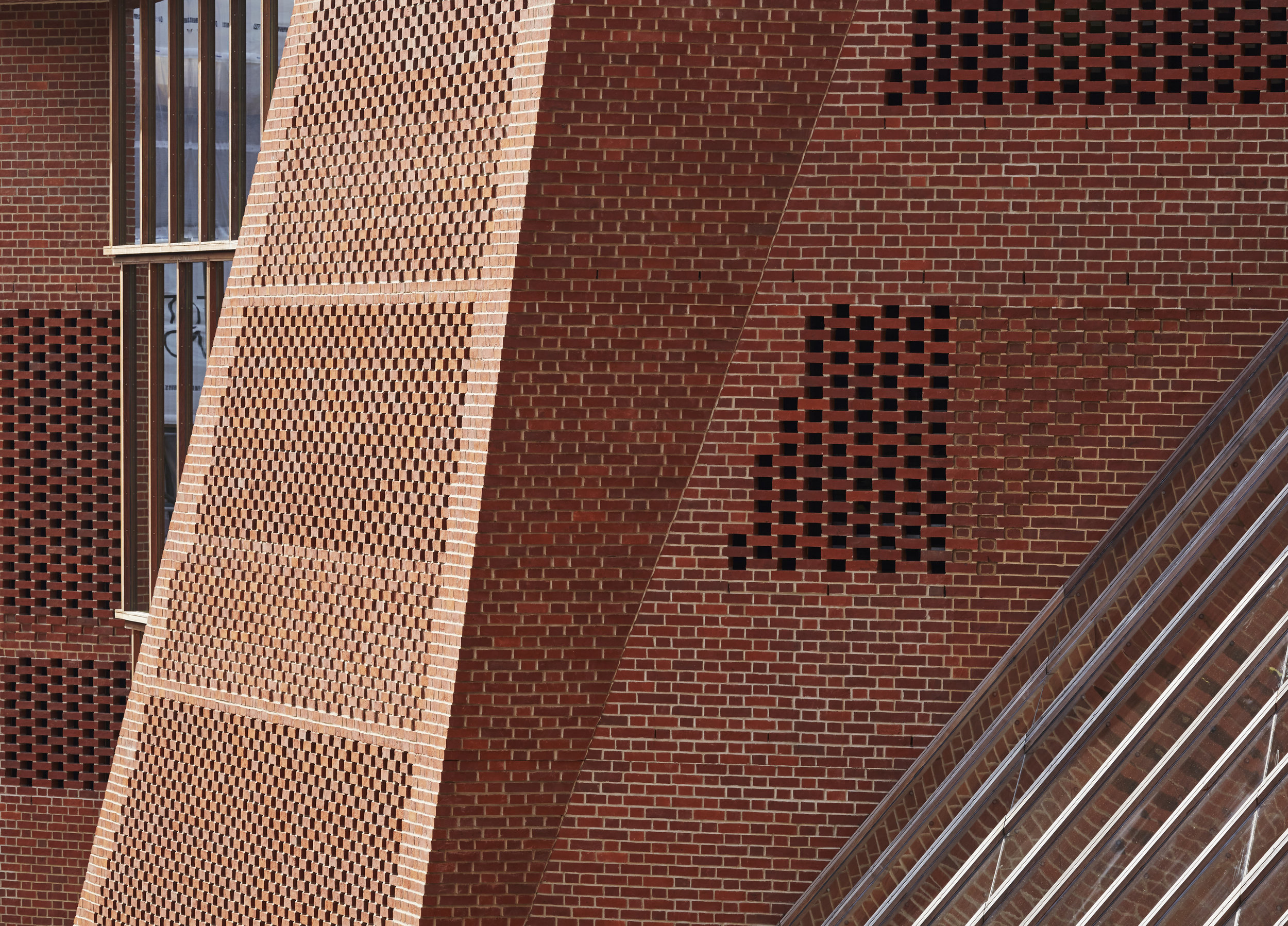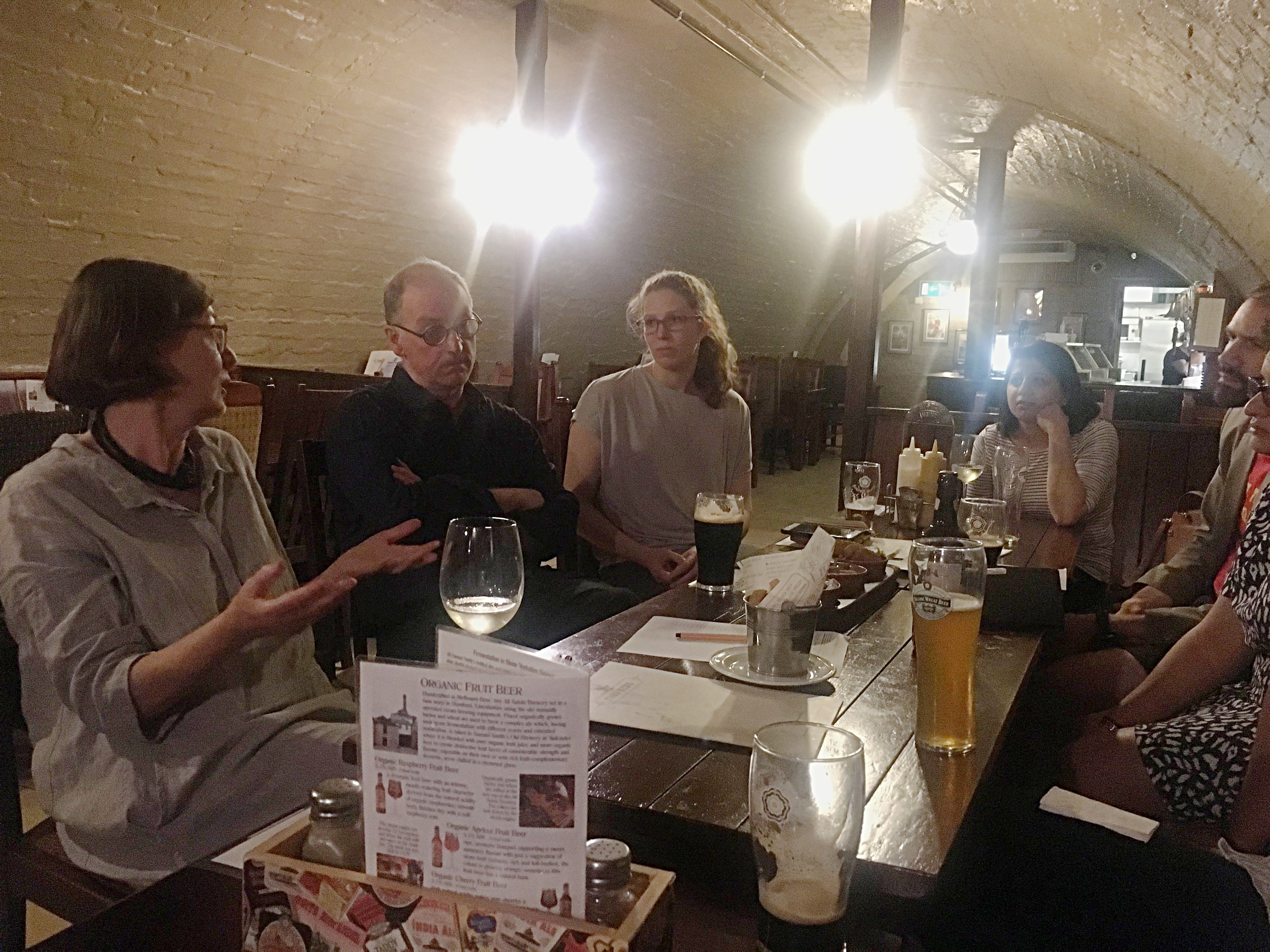Find the Gap
Fiona Mckay
In big auditoriums when prominent architects give lectures the conversations are most often focused on their recent built work or current research projects and they do not always touch on the questions that young designers might have for their role models. How did you get where you are? When did you know it was time to set out on your own? How did you find mentors and work early on? Additionally, these may not be questions emerging professionals feel comfortable asking even the most open minded of employers. For just this reason, the AIA UK has launched a round table series focusing on bringing together emerging professionals with leaders in the field to discuss in an intimate setting the pressing questions of young designers.
Shelia O’Donnell and John Tuomey kindly joined us for our first Ask an Expert session in May. Seated in a historic pub cellar in London, John and Shelia shared with us their belief in the importance of the first five years after graduation for young designers. For them their post graduate travel to see buildings by Palladio and Corbusier and their experience working for James Stirling shaped their understanding of practice. For example, at one point a group of A-team engineers showed up to work on a project but were so overly confident, having just completed a successful international project, that they didn’t properly address the architectural intent of the one they were being asked to consider by Stirling and his team. As soon as the engineers had left, without flinching, Stirling picked up the phone to the company and asked to be sent the B-team for the next meeting instead. Stirling taught John and Shelia early on about tenacity and the prioritization of design that allowed Stirling’s company to complete its bold iconic buildings.
Communication is also key, John and Shelia stressed the need to speak clearly about architecture and design intent with all parties. For this attendee, it was refreshing to hear how they believe architects should find ways to communicate which can reach all audiences equally, from clients to contractors and other architects. Even complex architectural ideas can usually be expressed more simply and understood more clearly then they are. Language, both verbal and visual are essential to John and Shelia’s design process, whether it is speaking about a project when they are traveling together and finding names for its elements, or layering up graphic ideas as they draw though a plan or elevation.
In John and Shelia’s estimation the best designers are the ones who have an innate curiosity and stay engaged in the world. Their own curiosity extends to experimenting with design features on their own house which is continually evolving as well as to teaching and using academic spheres as a way of exploring new ideas. For example, the usefulness of models was a lesson John and Shelia learned from their first experiences teaching in the United States which they brought back with them and implemented in their European teaching studios.
One sensitive subject the two touched on was how much more difficult it is now to start a practice and that often smaller and younger firms are overlooked for work. In the current climate, even well-established firms like theirs may have trouble because the base requirements for practice size, income and number of similar projects completed is so stringent. They lamented that by today’s standards they may not be qualified to complete some of their most celebrated work. This contradiction is something they have been vocal about when speaking with institutional clients and urge anyone putting together competitions to consider it and recognize how this may be stifling the next generation’s rising stars and the future’s important buildings.
When John and Shelia started their own practice, they chose to move back to Dublin from London where they had been working. It was in Dublin that they contributed to and benefited from a renewed cultural awareness in the city. They also became politically active in the community which led to some of their earliest projects. This opening up of the minds around them and the political will to create good designs was what enabled them to launch their brilliant careers. Their advice for young designers was to find “find the gap!”


